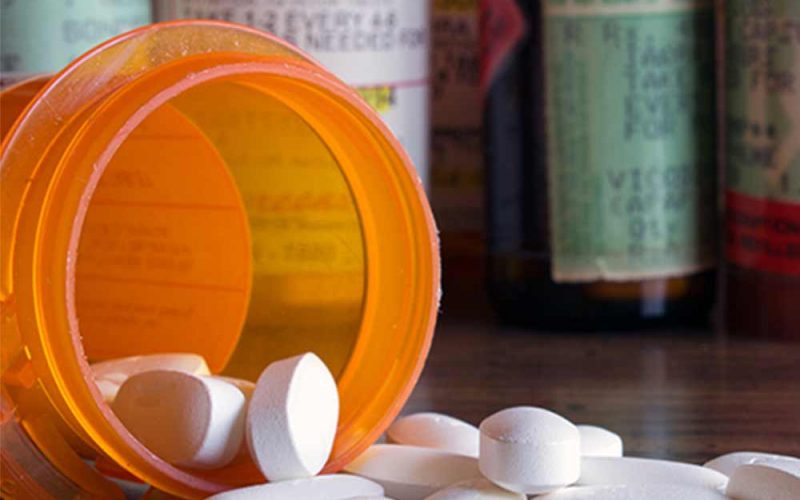When one stops or reduces taking opioids, they might have withdrawal symptoms as a result. This is especially common for those who have been taking high doses of opioids for an extended period because their body systems end up being modified. Opioid withdrawal happens as the body adjusts to the lack of drugs in the system.
Opioid withdrawal symptoms can be classified as severe, moderately severe, moderate, and mild. The severity of these withdrawal symptoms typically depends on how fast the person is coming off the opioids and how much they were using. The type of opiate taken will also determine the withdrawal symptoms experienced by a user. Short-acting opioids such as heroin will give the user more intense withdrawal symptoms within a shorter period. On the other hand, long-acting opioids like methadone will take much longer for the user to experience withdrawal symptoms.
Early Opioid Withdrawal
This will happen within either 30 hours (long-acting opioids) or 6 to 12 hours (short-acting opioids) after taking the last dose. Early opioid withdrawal symptoms usually start showing within 24 hours of taking the last dose of the drug. Early symptoms include:
 Frequent yawning
Frequent yawning- Being unable to sleep
- Sweating excessively
- A runny nose
- The eyes tearing up
- Anxiety
- Restlessness
- Muscle aches
- Hypertension
- An increased heart rate
Late Withdrawal Symptoms
Opioid withdrawal symptoms typically reach their peak 72 hours after taking the final dose but they will continue for just over a week. Symptoms experienced during this stage include:
- Depression
- Stomach cramps
- A strong urge for opioids
- Nausea
- Vomiting
- Diarrhea
- Goosebumps
- Blurry vision and dilated pupils
 The opioid cravings and psychological symptoms can go for a week or longer. However, healthcare professionals can provide adequate assistance as you go through these withdrawal symptoms. People who go through medically-supervised opioid detox typically have withdrawal symptoms for about 5 to 7 days. Even though opioid withdrawal is painful and unpleasant symptoms usually ease up after 72 hours. Individuals should experience a significant reduction in any intense opioid withdrawal symptoms they have.
The opioid cravings and psychological symptoms can go for a week or longer. However, healthcare professionals can provide adequate assistance as you go through these withdrawal symptoms. People who go through medically-supervised opioid detox typically have withdrawal symptoms for about 5 to 7 days. Even though opioid withdrawal is painful and unpleasant symptoms usually ease up after 72 hours. Individuals should experience a significant reduction in any intense opioid withdrawal symptoms they have.
In cases where a paramedic or a doctor administers a drug to help reverse a patient’s opioid overdose, this may speed up the onset of withdrawal symptoms and make them feel worse. This will also result in changes in the person’s heart rate or blood pressure calling for immediate medical attention.
Children who are born to mothers suffering from opioid addiction or those who abused opioids during pregnancy will also experience withdrawal symptoms such as:
- Seizures
- Vomiting
- Dehydration
- Poor feeding
- Digestive problems
Different substances and drugs will remain in your body for various durations and this can influence the onset of withdrawal. Factors such as your general health, the severity of the addiction, and frequency of use will affect the duration of your withdrawal symptoms. Recovery from opioid addiction requires the affected individual to abstain from opioids completely for at least 6 months. During this time, it is still possible to experience opioid withdrawal symptoms. This is known as protracted abstinence.
Opioid Withdrawal Treatment
Opioid withdrawal is a very difficult process. Fortunately, there are treatments available to help affected individuals get through these unpleasant symptoms or even manage them on their own. On the other hand, these treatments are typically administered in a controlled environment by qualified medical professionals to make patients more comfortable and increase their chances of success.
Mild opioid withdrawal is typically treated using NSAIDs or nonsteroidal anti-inflammatory drugs like ibuprofen, aspirin, or Tylenol (acetaminophen). It is vital to have lots of rest and fluids during this time. Drugs like hydroxyzine (Atarax, Vistaril) can help with nausea while loperamide (Imodium) is very effective for diarrhea.
Individuals experiencing intense opioid withdrawal symptoms might need to be hospitalized and given other medications. One drug that is mainly used during inpatient detox is clonidine, which helps to reduce the severity of opioid withdrawal symptoms significantly. Clonidine works particularly well in reducing symptoms such as:
- Runny nose
- Tears
- Sweating
- Restlessness
- Muscle aches
- Cramping
- Anxiety
Suboxone is a drug made by combining naloxone (opioid blocker) and buprenorphine, which is a milder opioid. It does not have most of the addictive properties that other opioids have. This opioid blocker drug prevents constipation by primarily working on the stomach. Once it is injected into the affected individual’s body, it will immediately result in withdrawal. This feature reduces the likelihood of people abusing it compared to other drug formulations. When taken orally, suboxone can be effective for treating withdrawal symptoms while reducing the duration and intensity of detox from more dangerous opioids.
Methadone is another drug used during recovery from opioid addiction or abuse. It is mainly used to maintain long-term abstinence from opioids. Even though it is still a strong opioid, it can be tapered in a controlled way that reduces the likelihood of generating intense withdrawal symptoms.
 Rapid detoxification of opioids is not usually done. On some occasions, it is done with opioid-blocking drugs like naloxone under anesthesia. There is some evidence indicating that this method does not reduce the duration of withdrawal even though it reduces symptoms. Also, since vomiting is one of the symptoms of opioid withdrawal, the possibility of vomiting while under anesthesia raises the risk of death greatly. For this reason, healthcare providers try as much as possible not to use this method as the benefits do not outweigh the risks.
Rapid detoxification of opioids is not usually done. On some occasions, it is done with opioid-blocking drugs like naloxone under anesthesia. There is some evidence indicating that this method does not reduce the duration of withdrawal even though it reduces symptoms. Also, since vomiting is one of the symptoms of opioid withdrawal, the possibility of vomiting while under anesthesia raises the risk of death greatly. For this reason, healthcare providers try as much as possible not to use this method as the benefits do not outweigh the risks.
If you are experiencing any opioid withdrawal symptoms it is advisable to speak to your healthcare provider about this. Your physician will then ask some questions about what you are experiencing and conduct a physical exam. This includes blood and urine tests which are essential for checking the presence of opioid drugs in your body. You might also be asked about your medical history and previous drug use so it is important to answer these questions honestly and openly. This will help you get the best healthcare support and treatment as you undergo opioid withdrawal.
